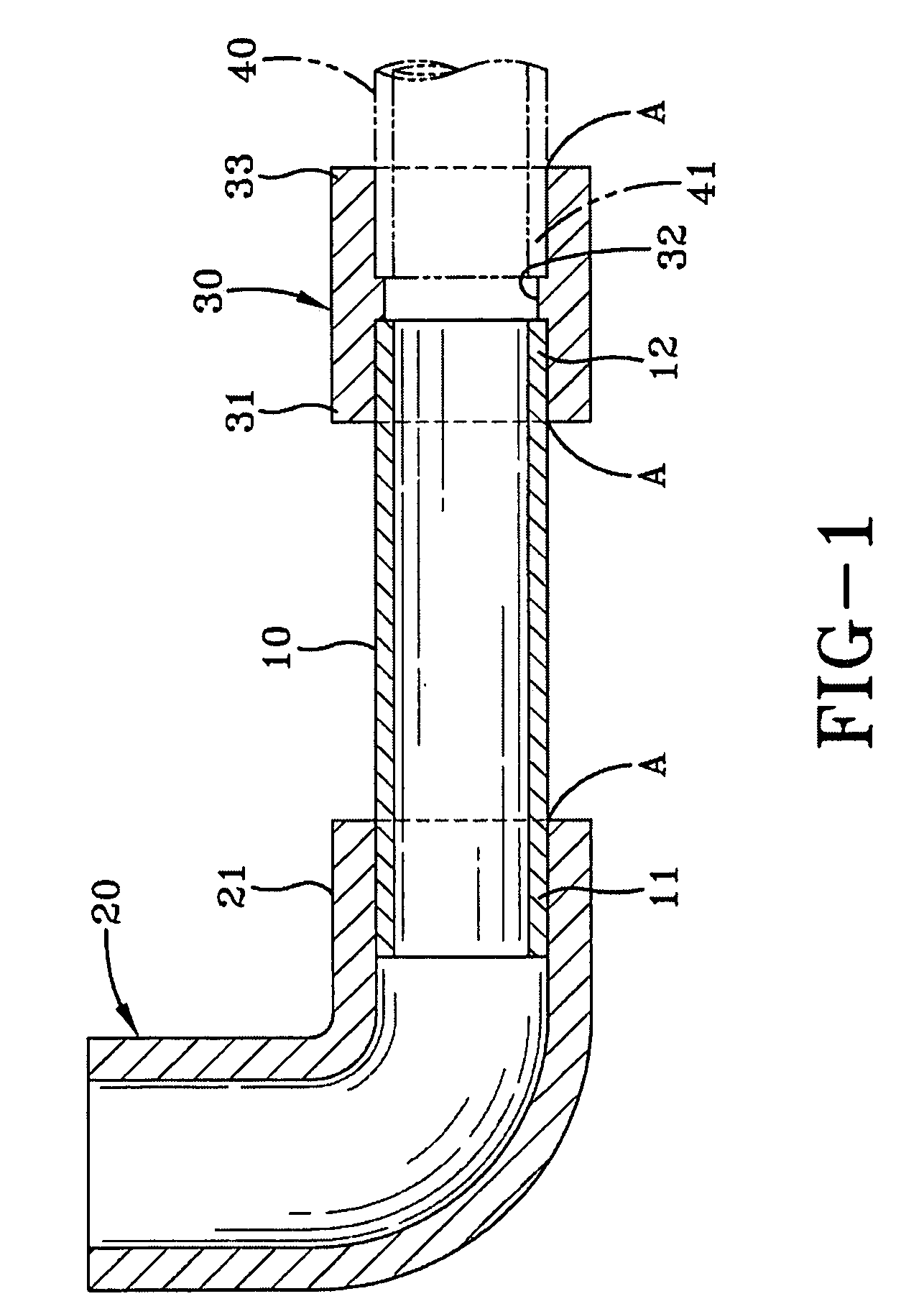Adhesively Secured, Fluid-Tight Pipe Joint Of PVC/CPVC Pipe And Fitting
a technology of fluid tightness and pipe joints, which is applied in the direction of mechanical equipment, chemistry apparatus and processes, and other domestic objects, can solve the problems of increasing curtailing, vocs being harmful to the environment, and toxic solvents deemed to be toxic to humans
- Summary
- Abstract
- Description
- Claims
- Application Information
AI Technical Summary
Benefits of technology
Problems solved by technology
Method used
Image
Examples
Embodiment Construction
[0026]Reference to PVC / CPVC pipe and pipe fittings herein reference to pipe which may be extruded from one or the other compound, and mated to a pipe joint formed from one or the other compound, respectively. In other words, PVC pipe is matched with PVC pipe fittings, and CPVC pipe is matched with CPVC pipe fittings.
[0027]The PVC and CPVC compounds used to make the pipe and fitting used in this invention are those which preferably have a majority (over 50% by weight) of the polymer components of the compound being PVC resin or CPVC resin, preferably at least 80% by weight. The PVC and CPVC compounds will typically contain other ingredients such as stabilizers, lubricants, fillers, colorants, and the like.
The PVC Pipe and Fittings for the Pipe:
[0028]PVC pipe and pipe fittings are commodities widely distributed by manufacturers around the globe. PVC, either in pellets or as powder, is extruded to form pipe, or is injection-molded or otherwise thermoformed, to form a pipe fitting. The ...
PUM
| Property | Measurement | Unit |
|---|---|---|
| temperature | aaaaa | aaaaa |
| temperature | aaaaa | aaaaa |
| temperature | aaaaa | aaaaa |
Abstract
Description
Claims
Application Information
 Login to View More
Login to View More - R&D
- Intellectual Property
- Life Sciences
- Materials
- Tech Scout
- Unparalleled Data Quality
- Higher Quality Content
- 60% Fewer Hallucinations
Browse by: Latest US Patents, China's latest patents, Technical Efficacy Thesaurus, Application Domain, Technology Topic, Popular Technical Reports.
© 2025 PatSnap. All rights reserved.Legal|Privacy policy|Modern Slavery Act Transparency Statement|Sitemap|About US| Contact US: help@patsnap.com


